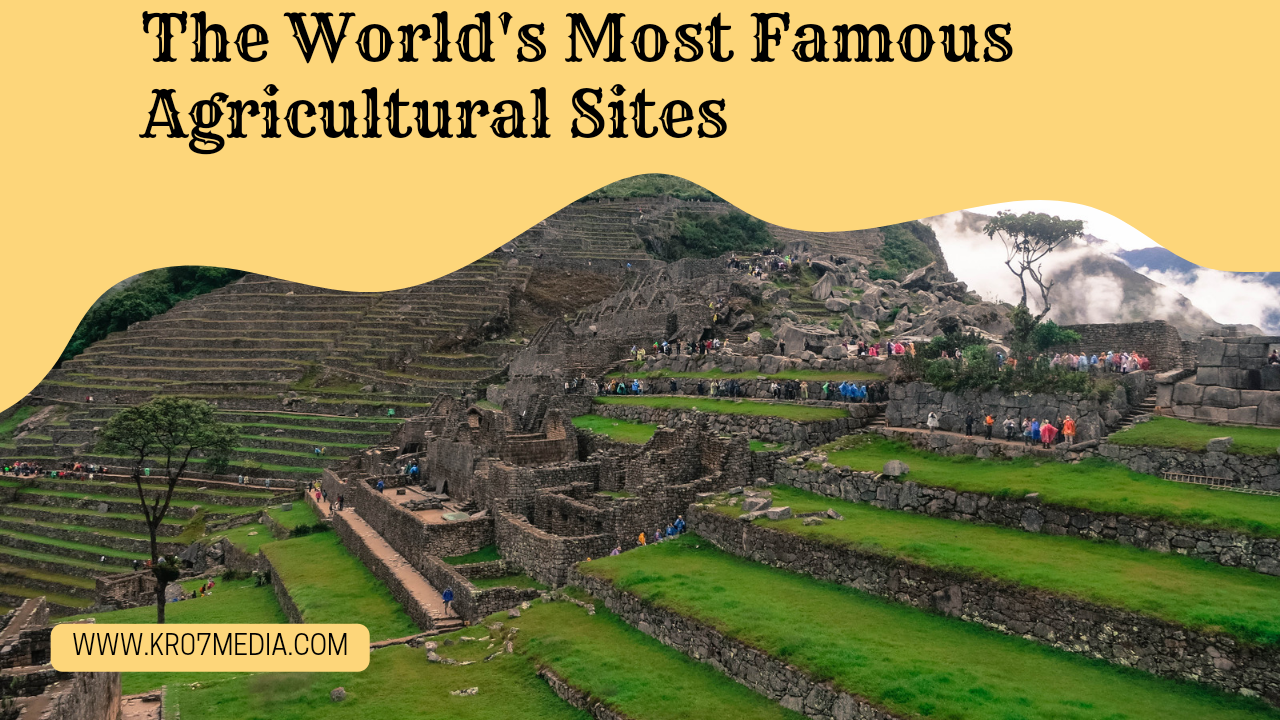Introduction
Agriculture is the backbone of human civilization, providing sustenance and livelihood to billions of people around the world. While modern agriculture has seen significant advancements, some historic sites remain as testaments to our agricultural heritage. In this article, we will explore some of the world's most famous agricultural sites, showcasing the rich history and significance of each location.
Machu Picchu, Peru
Machu Picchu is one of the most iconic archaeological sites in the world, and it's closely linked to agriculture. Nestled high in the Andes Mountains, this Inca citadel boasts impressive terraced fields that were used to cultivate crops like maize and potatoes. The agricultural terraces not only sustained the inhabitants but also showcased the Incas' mastery of farming techniques in challenging terrains.
Rice Terraces of Banaue, Philippines
The Rice Terraces of Banaue, often referred to as the "Eighth Wonder of the World," are an ancient system of hand-carved rice terraces that have been in use for over 2,000 years. These terraces showcase the Ifugao people's sustainable and innovative agricultural practices, with the mountain slopes sculpted into stair-like fields that maximize rice cultivation in the region.
Hoshang Shah's Tomb Garden, India
In the heart of India, the Hoshang Shah's Tomb Garden is a marvel of Mughal architecture and horticulture. The garden features intricate geometric designs and lush vegetation, including a variety of fruit trees, flowers, and water channels. It exemplifies the Persian-style charbagh garden, which played a vital role in the history of Mughal horticulture.
Terracotta Army, China
The Terracotta Army, discovered in the tomb of China's first emperor, Qin Shi Huang, is renowned for its stunning life-sized terracotta soldiers. Yet, it's not just an army; it's also a testament to ancient Chinese agriculture. The tomb complex includes detailed replicas of farming tools, animals, and even an underground irrigation system, showcasing the agricultural practices of that era.
Monticello, United States
Monticello, the home of Thomas Jefferson, serves as a historical agricultural gem. Located in Virginia, this plantation estate reflects Jefferson's passion for agriculture and horticulture. He experimented with numerous crops and introduced innovative farming methods. The gardens at Monticello feature an array of plants, demonstrating the breadth of botanical knowledge during Jefferson's time.
Svalbard Global Seed Vault, Norway
In the modern era, the Svalbard Global Seed Vault represents a crucial agricultural site. Nestled deep within a mountain on a remote Norwegian island, it serves as a global insurance policy for agriculture. The facility stores a vast collection of seeds from around the world to safeguard against natural disasters, climate change, and other threats to food security.
Conclusion
These famous agricultural sites from different corners of the world highlight the diverse practices, innovations, and historical importance of agriculture. From ancient terraces to innovative seed banks, these locations offer a glimpse into the rich tapestry of our agricultural heritage. Exploring these sites not only educates us about the past but also reminds us of the critical role agriculture continues to play in shaping our world today.



